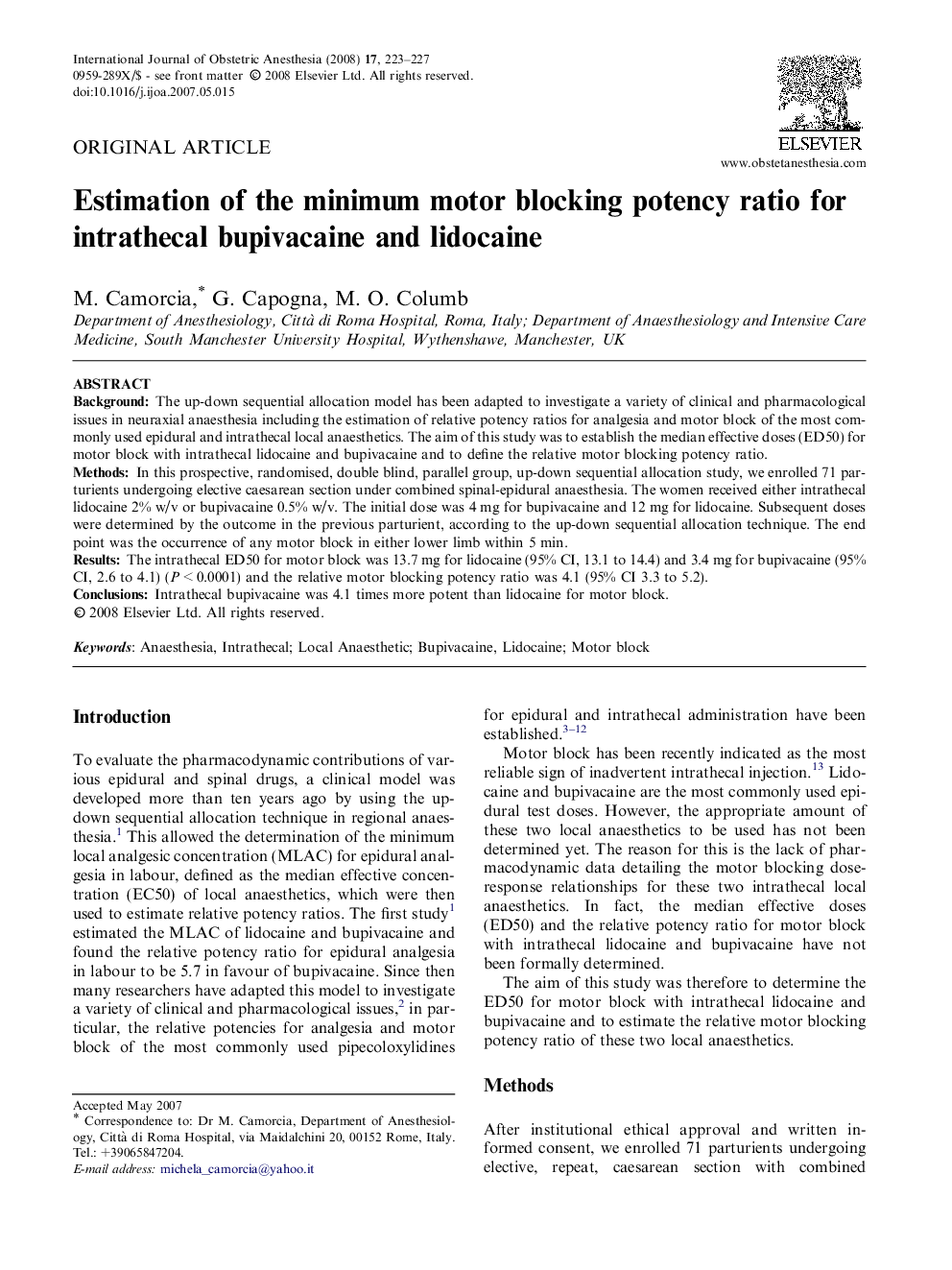| کد مقاله | کد نشریه | سال انتشار | مقاله انگلیسی | نسخه تمام متن |
|---|---|---|---|---|
| 2758462 | 1567548 | 2008 | 5 صفحه PDF | دانلود رایگان |

BackgroundThe up-down sequential allocation model has been adapted to investigate a variety of clinical and pharmacological issues in neuraxial anaesthesia including the estimation of relative potency ratios for analgesia and motor block of the most commonly used epidural and intrathecal local anaesthetics. The aim of this study was to establish the median effective doses (ED50) for motor block with intrathecal lidocaine and bupivacaine and to define the relative motor blocking potency ratio.MethodsIn this prospective, randomised, double blind, parallel group, up-down sequential allocation study, we enrolled 71 parturients undergoing elective caesarean section under combined spinal-epidural anaesthesia. The women received either intrathecal lidocaine 2% w/v or bupivacaine 0.5% w/v. The initial dose was 4 mg for bupivacaine and 12 mg for lidocaine. Subsequent doses were determined by the outcome in the previous parturient, according to the up-down sequential allocation technique. The end point was the occurrence of any motor block in either lower limb within 5 min.ResultsThe intrathecal ED50 for motor block was 13.7 mg for lidocaine (95% CI, 13.1 to 14.4) and 3.4 mg for bupivacaine (95% CI, 2.6 to 4.1) (P < 0.0001) and the relative motor blocking potency ratio was 4.1 (95% CI 3.3 to 5.2).ConclusionsIntrathecal bupivacaine was 4.1 times more potent than lidocaine for motor block.
Journal: International Journal of Obstetric Anesthesia - Volume 17, Issue 3, July 2008, Pages 223–227